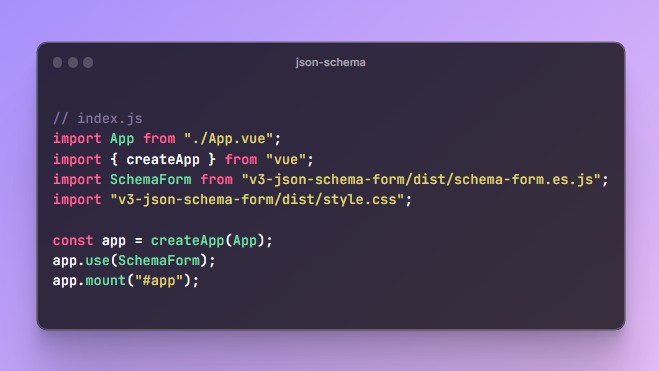Prototype – Buefy Field Validation using JSON Schema and AJV
A prototype example to use JSON Schema as the validation rules for Buefy input components.
The example here uses the Input component in Buefy and also uses the popular JSON schema validator AJV.
Project setup
npm install
Compiles and hot-reloads for development
npm run serve
What is this about?
This is a very simple Vue 2 app I was using to work out how to do dynamic validation of Buefy inputs using JSON schema.
What to be aware of:
- JSON Schema sample is in the
src/schemasfolder. It doesn’t have all schema options but a few - The array isn’t done correctly in this prototype
- it’s not super neat but it is more to work out the right flows
There are three different examples. They can be switched over in the main component to mount in App.vue to look at the different versions:
InputExample.vuea simple example which parses the right field json schema from the full schema and applies thatInputExample2.vuethat uses the full schema as a validator and assembles the value into key value pair to validate. This means the same validator can be used for all field validationsInputExample3.vuetakes this one level further and moves the validator to an import (like doing it in a Vuex store as part of an action once the schema is fetched). The AJV compile stage might take a bit of time so we compile this once for the full schema and then we use this (function) to validate in the component. The code for the validator to be imported is invalidator.ts
What are the steps to embed validation Vue.js app
Broadly the following steps need to happen:
- Load the JSON schema from somewhere
- Create a validator from the AJV package simply – move this to a Vuex store
- Now within the Vue component where the field is housed, in a computed property, pass the v-model value through the validator to validate it. (Consider debouncing it using
.lazyto avoid having heavy processing on every keystroke?) - The validator returns
trueorfalsefor the validation result and it also contains any error messages in thevalidator.errorsproperty as a list of error objects, each with amessageproperty that gives a human-readable error message. If here are no errors then the validator returnstrueandvalidator.errorsisnull - Computed properties can parse the valid and error messages. I’m just parsing the first error message if there are multiple as no-one particularly wants to see lots of errors at once!
- Wire the valid into the field type with
is-dangeron Buefy or similar on other frameworks. - Pass any error message to the
Field.messageprop to be rendered
Simples!
What are the lessons for me from this prototype?
- We need to parse arrays and numbers and text differently. Suggest we use separate input widgets for that as the
v-model.numbercasting does not seem to be dynamic. Also thetype='number'does not seem to work dynamically either. The JSON schematypefield needs to be parsed to work out the type of variable expected - If the validator is created at the global level then do this once in the Vuex store and make it available. If not then use it locally using just the specific field schema in each component. If we render a lot of fields, this might get quite heavy
- Wiring into the Buefy components are pretty standard and simple using the simple example of the error format in the Buefy docs



